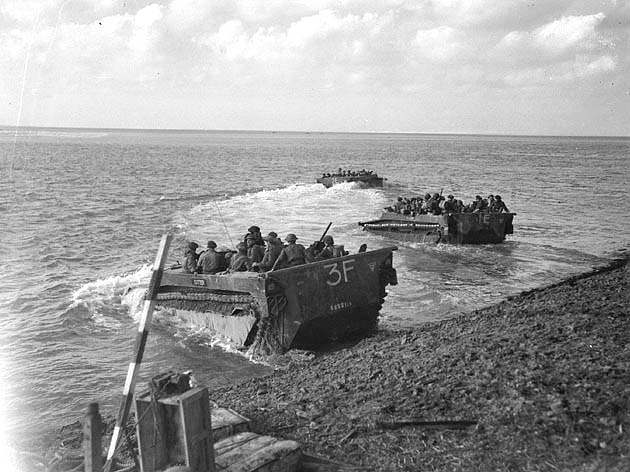Overnight on Oct. 31, 1944, Canadian troops fought to establish a foothold on Walcheren Island, the last obstacle to opening the port of Antwerp, Belgium, to Allied shipping.
The Allied invasion moved so quickly that by September, supplies had become a problem. What could be delivered through Allied-held ports or by air was insufficient to support an invasion of Germany.
Antwerp, about 100 kilometres inland on the Scheldt River, was in Allied hands and could handle 1,000 ships at a time, but the Germans commanded the river approaches in the Netherlands. The First Canadian Army was tasked with liberating the Scheldt, supported by British and Polish troops.
The gruelling campaign began on Oct. 2 to clear the Breskens Pocket and Leopold Canal and secure the islands on the river delta. At month’s end, the final task was to capture Walcheren Island, accessible only over a long and well-defended causeway where an anti-tank gun fired at troops trying to cross on foot.

Troops fanned out from the foothold. When all officers of one company were killed or wounded, staff officer Major George Hees (later Minister of Veterans Affairs) volunteered to take over, staying in place even after being wounded in the arm. “It took a lot of guts for a guy who had never been in action to go into a hell-hole like that one,” the Highlanders’ commander Lieutenant-Colonel Ross Ellis said later.
Sergeant Emile Laloge earned the Distinguished Conduct Medal for picking up German grenades and throwing them back and taking over weapons of wounded and dead comrades and turning them on the enemy.
When two Le Régiment de Maisonneuve platoons took over the bridgehead, “It was like entering a giant blast furnace stoked with fireworks,” wrote one commander quoted on canadiansoldiers.com. Zigzagging forward, his platoon came under fire of a 20-millimetre gun and took shelter in a ditch, where “we shivered from cold and exhaustion, in waist-deep water.” Private J.C. Carrière earned the Military Medal by taking out the gun with an infantry anti-tank weapon.
Learning that no relief would come, the platoon had to retreat. “It was…every man for himself…in broad daylight, along the railroad bank from which the enemy could lob grenades and snipers, across the open field, had a clear view of moving targets,” wrote the commander.
Continuous fierce fighting put the island into Allied hands on Nov. 8. Antwerp opened to Allied shipping on Nov. 28, after clearing of obstacles and booby traps left by the Germans.
Advertisement













